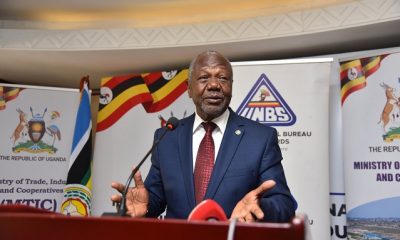Analysis
A Look at the World’s Largest Parliaments
Parliaments worldwide vary greatly in size, from a few dozen members to several thousand. The number of Members of Parliament (MPs) in each country reflects its population size, political system, geography, and efforts to include diverse voices. Here, we explore the 20 countries with the highest number of MPs and why their legislatures are so large.
1. China — Approximately 2,980 MPs
China’s National People’s Congress is the world’s largest legislative body. It represents a population exceeding 1.4 billion people across vast and diverse provinces. The NPC includes delegates from every ethnic group, province, region, and sector, making it a broad-based but massive assembly designed to incorporate voices from across the entire country.
2. India — 543 MPs (Lok Sabha)
India’s Lok Sabha (House of the People) reflects the country’s federal structure and immense population of over 1.4 billion. Seats are allocated largely by population size, ensuring proportional representation for its 28 states and 8 union territories. The Lok Sabha’s size helps balance regional, linguistic, and cultural diversity.
3. United Kingdom — 650 MPs (House of Commons)
The UK’s parliamentary size stems from centuries of political evolution and a constituency-based electoral system. It represents England, Scotland, Wales, and Northern Ireland, balancing population density with geographic size, ensuring rural and urban areas both have representation.
4. Indonesia — 575 MPs
With a population exceeding 270 million scattered across thousands of islands, Indonesia’s large legislature helps ensure that its many ethnic groups and remote regions have representation in national policy making.
5. Brazil — 513 MPs (Chamber of Deputies)
Brazil’s population of over 200 million is represented in a federal system that apportions seats according to state populations. The large number balances Brazil’s ethnic and geographic diversity, from the Amazon rainforest to large urban centers.
6. Mexico — 500 MPs (Chamber of Deputies)
Mexico’s federal structure and population of around 130 million require a legislature sizable enough to represent states with widely varying populations, from densely populated urban areas to rural and indigenous regions.
7. France — 577 MPs (National Assembly)
France’s size reflects its administrative divisions and the need to balance urban and rural representation, maintaining proportionality across departments.
8. Japan — 465 MPs (House of Representatives)
Japan balances proportional representation and single-member districts for its population of about 125 million, maintaining a large enough parliament to ensure regional diversity in policy debates.
9. Russia — 450 MPs (State Duma)
Russia’s vast geography and numerous ethnic groups demand a federal legislature large enough to ensure representation from all its republics, territories, and regions.
10. Uganda — 556 MPs (Unicameral Parliament)
Uganda’s Parliament is notable for its inclusiveness. It combines directly elected constituency representatives with district women’s representatives (146 seats), as well as representatives for youth, persons with disabilities, workers, older persons, and the Uganda People’s Defence Forces (military). This structure inflates the size but guarantees wide representation.
11. Pakistan — 342 MPs (National Assembly)
Pakistan’s large population (around 240 million) and federal provinces require a legislative body that balances regional interests and demographic representation.
12. Philippines — 316 MPs (House of Representatives)
The Philippines’ archipelagic geography, with over 7,000 islands, necessitates a large legislature to ensure representation across dispersed and diverse populations.
13. South Africa — 400 MPs (National Assembly)
South Africa’s proportional representation electoral system, coupled with its ethnic diversity and provincial divisions, creates a legislature large enough to include voices from all sectors of society.
14. Bangladesh — 350 MPs (Jatiya Sangsad)
With over 170 million people and dense population centres, Bangladesh’s legislature balances regional representation and population size, while reflecting political and cultural diversity.
15. Germany — Approximately 598 MPs (Bundestag, variable)
Germany’s mixed-member proportional electoral system causes the Bundestag’s size to fluctuate, usually around 600 members, to maintain proportional representation across federal states.
16. Argentina — 257 MPs (Chamber of Deputies)
Argentina’s federal system apportions deputies to represent provinces according to population, balancing the country’s regional interests within its roughly 45 million population.
17. Kenya — 349 MPs (National Assembly)
Kenya’s population of about 55 million, combined with ethnic diversity and county-based devolution, results in a relatively large legislature designed for inclusive representation.
18. Canada — 338 MPs (House of Commons)
Canada’s geographically expansive federal system with provinces of varying population densities requires a parliament that balances both regional and population representation.
19. Italy — 400 MPs (Chamber of Deputies)
Though Italy recently reduced its parliamentary seats, its legislature remains sizable to represent its population (~60 million) and regional diversity.
20. United States — 435 MPs (House of Representatives)
The US House’s size reflects a balance between manageable numbers and representation of 50 states with diverse populations, apportioned primarily by population but limited to 435 since 1911.
What Drives Parliament Size?
Population Size: Larger populations usually demand more representatives to ensure constituents’ interests are well covered.
Federal Structure: Countries with federal or devolved systems often have bigger parliaments to represent states, provinces, or districts. Geographic Diversity: Vast or geographically fragmented countries need more MPs to give remote or sparsely populated areas a voice.
Political Inclusivity: Countries like Uganda deliberately allocate seats to special interest groups to promote broader representation. Electoral Systems: Proportional representation systems can lead to larger parliaments to maintain proportionality.
Uganda’s unique model prioritises inclusivity, making it one of the largest legislatures in Africa, while populous giants like China and India manage massive assemblies to govern their vast, diverse societies.
As political landscapes evolve, parliamentary sizes may also adjust—balancing effectiveness with the need to represent all citizens fairly.
Comments



























